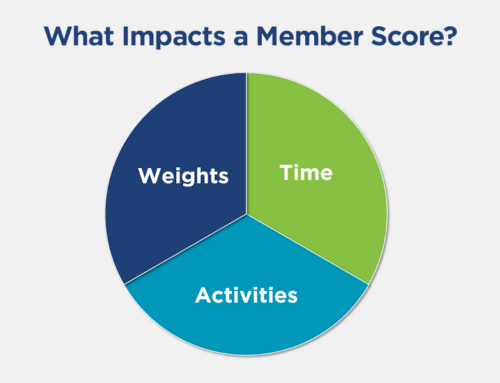Our gut instincts play a role in our decisions – both in our personal and professional life. And more times than not, we can trust our intuition when making decisions. However, in our associations, relying on gut isn’t enough to achieve strategic goals and to stay relevant. We also have to be data-guided in our decisions. Both go hand in hand. This is because today we have more decisions to make than ever before, and the pace of change itself is increasing exponentially. It’s really just not possible for associations to rely on instinct, politics or tradition in today’s world.
A few weeks ago, Ric Camacho, Chief Technology & Digital Officer, Specialty Food Association Inc. and I presented on Business Analytics Projects and Initiatives at ASAE Annual. During this year’s ASAE Annual Meeting in Toronto, we conducted a live poll of our audience during our session about Business Analytics Projects and Initiatives and what we discovered was surprising. Although these findings are from polling the attendees of one session, based on over a decade of experience we find these statistics to be representative of what we find holds true at most associations.
Here are 6 surprise findings from the survey results:
1) Data isn’t easily available in one centralized location for easy reporting and analysis.
Only 8% agree that the data is available in one centralized location, while 72% disagree and feel that their data isn’t easily accessible in one location. When data is scattered in different systems and spreadsheets, this leads to data silos. The data that one group has in their system can be just as valuable for someone else at their association – especially when combined with other data. And while it’s tempting to put your data in a system that is convenient for you, that’s not helping in creating a more data-guided, transparent culture either. Everyone at your organization should have the ability to drill down into data visualizations to pull data at any time. Combining data in one easy-to-access environment creates transparency across the organization, which in turn helps staff members make better decisions about both strategy and execution.
2) Business staff don’t have the tools to easily access data with having to rely on IT.
72% indicate their staff have to rely on their IT team to access the data they need. Ideally, the data shouldn’t be only accessible via IT. If you can have access to and can quickly understand the meaning of data when you need it, think of the all the time you will save! You can spend more time examining it and making your next move. Data is an asset for everyone at your association, regardless of which department they’re in. By having easy access to data, you can better define business goals and develop strategies to attain them. You can also track KPIs on a regular cadence when they are available across the organization and updated automatically every day. Relying on another department to perform a task that you should be able to do yourself is a burden to both you and the department pulling the data, particularly if the other department has a lot on their plate. You feel more empowered in your roles when you have the ability to pull reports that allow you to do your job more effectively – which also makes you happier and more fulfilled!
3) We don’t use visualization tools to understand our data and make decisions quickly.
69% of attendees believe that their existing data analytics tools aren’t visually appealing. Believe it or not, you can showcase your data in an attractive and meaningful way. Most people are naturally drawn to attractive visuals. When presenting your data story to your executive team, you’re more likely to capture and hold attention if the data is presented in a visually appealing way. Telling your data story using a dashboard instead of a traditional spreadsheet is a great way to demonstrate patterns or trends which help you make more strategic decisions because you have the data to back up your ideas.
4) We don’t use data to effectively segment and target marketing.
One way to annoy and potentially lose your members is by spamming them with irrelevant content. Each member at your organization is unique and has different interests. And you can determine what content is valuable to them if you examine your member data and demographics. It’s up to your team to determine what segments make the most sense for your organization. By segmenting your audience, you show that you care about your members and their needs and want to offer them something of value.
5) Data is recognized as an asset and analytics is seen as critical to strategic success.
Another surprising revelation from this survey is how many people understand that data is an integral part of an organization’s success. However, they aren’t utilizing it in the best way possible for the reasons listed above. Getting organizational buy-in for an analytics platform can be an uphill battle if your CEO and board don’t understand the need. It can be a cultural realignment if that’s not how decisions have been made in the past. However, it’s not impossible to change the culture if their goal is to further the organization’s mission, and you can’t do that relying on instinct alone.
6) Data analytics has the support of the CEO and board.
68% of association staff have the support of the CEO and board that data analytics plays a key role in driving their association’s mission – and this is great news! Getting buy-in from the executives is half the battle so once you have their support for using data to make decisions, then it’s easy to explain the need for an analytics platform. Data analytics is something that everyone at your organization can benefit from – but remember the “tool” is not the solution. It’s a process, not a project. The important thing is to begin where you are and create a roadmap that will meet your needs both now and in the future.
Ready to Plan?
Contact us at [email protected] or (800) 920-9739 to discuss your association’s analytics strategy and roadmap.



